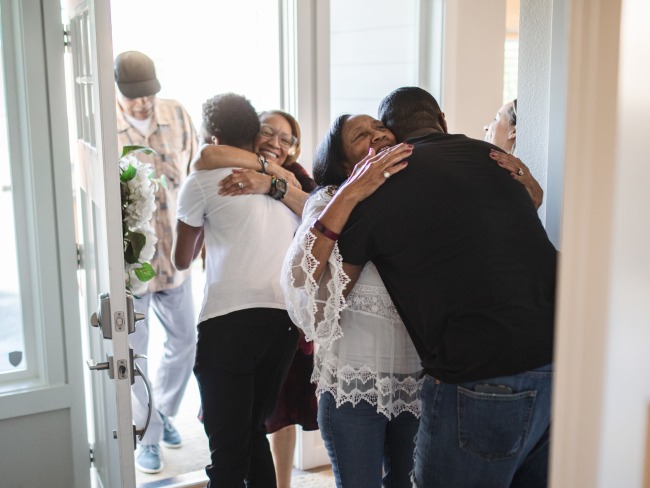Bringing More Teens Home: Raising the Age Without Expanding Secure Confinement in the Youth Justice System
A decade ago, “raising the age” was considered a high-cost and risky investment. Today, research and outcomes demonstrated that not only did the sky not fall, but proponents underestimated the successes to come.
Related to: Youth Justice

Eleven states raised the age of criminal responsibility to age 18 since 2007, in a reform initiative referred to as “raise the age” (RTA). Today, only three states — Georgia, Texas and Wisconsin — consider every arrested 17 year old to be an adult and prosecute them in the adult justice system instead of the juvenile justice system. Nationally, more than 100,000 youth every year have been returned to juvenile court, with a very minimal, often temporary, increase in the use of secure facilities.
The youth justice system was designed to treat children like children: accounting for youthful indiscretions and providing rehabilitative services to get children and their families back on track. Early this century, building on advancements in neuroscience and adolescent development and a reckoning with racial injustice, states reexamined the jurisdictional boundaries between their juvenile and adult criminal legal systems. The effort began as youth arrests declined, falling by 67% between 2001 and 2018, a trend that continues today.1
Each year, these initiatives have brought at least 100,000 teenagers, disproportionately Black and Latinx, back from the adult system.2 The number of young people in the adult system has dropped by 60%.3 Despite claims to the contrary, bringing these youth back under juvenile jurisdiction did not significantly increase costs, confinement, or crime.
Following a period of harsh and extreme policies that stripped minors (disproportionately young people of color) of the protections and rehabilitative nature of the juvenile court, in the 21st century, states began to reassess the way they defined childhood under the juvenile justice system. States acknowledged that 16 and 17 year olds who were considered children by every other government standard — voting, buying cigarettes, joining the military, and signing a legal contract — were
not treated as children when they came in contact with the law. At the same time, falling youth crime and drops in youth incarceration led states to consider reforms that would better align the principles of adolescent development with the juvenile justice system.
Raise the age (RTA) reforms brought the vast majority of children (under the age of 18) back to the jurisdiction of juvenile court. While every state’s reforms included both misdemeanor and some felony charges, RTA reforms did not address other pathways into adult court such as judicial transfer or automatic transfer, laws that allow youth to be charged as adults for more serious offenses regardless of their age; laws that disproportionately are applied to youth of color. Further reforms are necessary to ensure that every child falls under the jurisdiction of juvenile court.
Despite the incremental approach of RTA reforms, opponents suggested that the costs of the reforms would be prohibitive, largely due to the need to build more secure facilities to accommodate the 16 and 17 year olds returning to the juvenile justice system. Fiscal notes often cited exorbitant costs associated with expanding the number of secure beds (professional jargon for holding incarcerated children in locked facilities) as a challenge to this common-sense reform.
Even proponents of raising the age believed that adding significant numbers of youth would strain the capacity of secure facilities, such as detention centers, youth prisons, and other out-of-home placements. Despite arrests of 17 year olds making up a majority of low-level charges (similar to younger youth), and a significant decline in the use of secure placement in this century—the number of beds and how to pay for them constituted a significant hurdle in RTA policy reform negotiations.
This report reviews each of the states that have raised the age of jurisdiction for its youth justice system and assesses the resulting housing needs for incarcerated youth. These states’ experiences present a clear picture that adding more youth under the jurisdiction of juvenile courts does not inevitably require additional secure facilities to house them, dispelling many of the assumptions of lawmakers and opponents of reform. The long-term declines in youth offending and arrests assume much of the credit for the decline in expected expenditures. Indeed, facilities continue to be closed or have excess capacity around the county, including in the states that recently raised the age.4
Together, these states present a hopeful picture for the states that have yet to raise the age as well as those states that may add older adolescents under the jurisdiction of their juvenile courts.
| State | Legislation Passed | Implementation |
|---|---|---|
| Connecticut | 2007 | 2010 (16 year olds) 2012 (17 year olds) |
| Illinois | 2009 (misd.) 2013 (felonies) |
2010 (misd.) 2014 (felonies) |
| Mississippi | 2010 | 2011 |
| Massachusetts | 2013 | 2013 |
| New Hampshire | 2014 | 2015 |
| Louisiana | 2016 | 2019 |
| South Carolina | 2016 | 2019 |
| New York | 2017 | 2018 (16 year olds) 2019 (17 year olds) |
| North Carolina | 2017 | 2019 (16 and 17 year olds) |
| Missouri | 2018 | 2021 |
| Michigan | 2019 | 2021 |
| 1. | Office of Juvenile Justice and Delinquency Prevention (2010) “Estimated number of juvenile arrests,” https://www.ojjdp.gov/ojstatbb/crime/qa05101.asp?qaDate=2010&-text=yes |
|---|---|
| 2. | Justice Policy Institute, (2017). “Raising the Age: Shifting to a More Effective and Safer Juvenile Justice System,” Washington, D.C. http://www.justicepolicy.org/uploads/justicepolicy/documents/raisetheagesummary_final_3_6_16.pdf; and Puzzanachera, C., Sickmund, M, and Sladky, A (2018). “Youth younger than 18 prosecuted in criminal court: National estimate, 2015 cases,” Pittsburgh, PA. http://cfyj.org/images/Transfer-estimate.pdf |
| 3. | Justice Policy Institute. (2017), pp. 4 |
| 4. | . Puzzanchera, C., Hockenberry, S., Sladky, T.J., and Kang, |
W. (2020). “Juvenile Residential Facility Census Databook.” https://www.ojjdp.gov/ojstatbb/jrfcdb/


